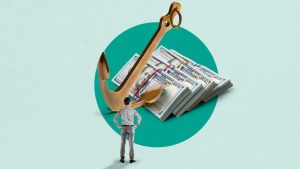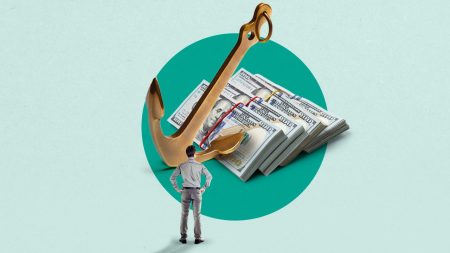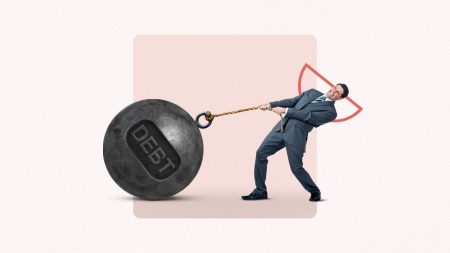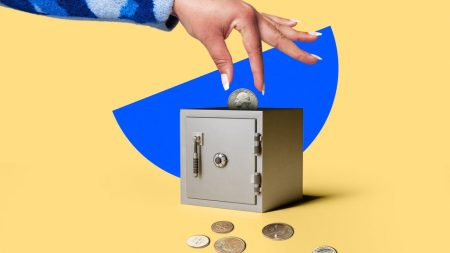Key takeaways
- Emergency loans can help cover a wide range of unexpected expenses when you don’t have enough savings.
- There are different types of emergency loans, including installment and revolving options.
- Personal loans and personal lines of credit offer lower interest rates and more flexibility.
- Payday and title loans have higher interest rates and should be used as a last resort.
- Evaluate the benefits of each loan type to determine the best option for your specific situation.
An emergency loan is any money borrowed for an unexpected expense. People often turn to them because they don’t have enough savings to pay cash for bills related to an emergency. Bankrate’s 2025 Emergency Savings Report found that 19 percent of people don’t have any emergency savings.
There are various emergency loans to choose from, including credit cards, personal loans, payday loans and personal lines of credit. Each has benefits and drawbacks worth understanding before you formally apply for funding.
What to know about emergency loans
If you need cash immediately, there are several types of emergency loans to choose from. The right product depends on how much you need, how fast you need the money, your financial situation and your monthly budget.
Emergency loans can be installment or revolving forms of credit. With an installment loan, you receive all the funds at once and make fixed monthly payments over a set period. However, a revolving loan lets you use, pay off and reuse the credit as often as needed.
Both options feature fast funding times, sometimes as soon as the same day you apply.
Emergency loans: Installment options
Installment loans are best if you want a predictable payment, fixed interest rate and access to all the funds upfront. Here are the most viable options:
Personal loans
Personal loans are a popular choice because they can be funded quickly — sometimes the same day you apply — with a relatively easy approval process. They typically come with fixed interest rates and loan terms ranging from one to seven years.
If you have excellent credit, you may qualify for loan amounts between $1,000 and $100,000 and a rate below 8 percent. However, bad credit personal loan lenders may approve borrowers with scores as low as 300, but the rates can be as high as 36 percent.
Most emergency personal loans are unsecured, which means you can qualify without putting up collateral. Instead, the lender assesses your credit score, income and job history to make a decision.
The best emergency loans of 2025
If you need cash in a hurry, consider Bankrate’s picks for the top emergency loans.
Learn more
Payday loans
Payday loans are small emergency loans of up to $500, often made by storefront lenders. They must be repaid, plus fees, by your next paycheck, and annual percentage rates (APRs) can exceed 400 percent. Most payday loans don’t require a credit check, as loan approval is based entirely on your earnings.
Many states consider payday loans to be predatory and regulate them heavily. Thanks to their short repayment terms, many payday borrowers end up needing to borrow a second loan to repay the first, getting trapped in a cycle of debt. Payday loans should only be used as a last resort and after exhausting all other options.
Title loans
A title loan is a secured installment loan that uses your vehicle as collateral. You can typically borrow 25 to 50 percent of your car’s value with repayment terms of 15 to 30 days.
Title loans may be easier to qualify for at lower rates than payday loans, but your vehicle must meet the lender’s standards, and you must own the car outright. And there’s a major downside: If you can’t repay the loan, the bank could repossess your vehicle. Due to the high rates and risk of losing your vehicle, title loans are also a last-resort option.
Emergency loans: Revolving options
Credit cards and other types of revolving credit come in handy if you can’t afford an installment loan payment or don’t need all the emergency cash immediately. Your payment is only based on the amount you use, giving you a lower payment if you only need to borrow a small amount of your full credit line.
Before borrowing, be sure you understand how revolving credit impacts your credit score. Maxing out your credit line can lower your credit score because it affects your credit utilization ratio. The more available credit you use, the lower your credit score will be. It can also be easy to get into the habit of carrying a balance if you only make the minimum payment every month.
By comparison, installment loans don’t affect your credit utilization ratio and require you to pay the loan off in a set time period.
Credit cards
Using an existing credit card to access emergency funds is a relatively hassle-free option that doesn’t require a new credit inquiry. You can also request a cash advance, although you’ll usually pay a higher rate and a transaction fee of between 3 and 5 percent for the advance.
You’ll only make payments on the amount you use, and minimum payments are usually much lower than what you pay for a personal loan. However, credit card rates are typically variable and may be significantly higher than personal loan rates.
Personal line of credit
A personal line of credit gives you the same flexibility as a credit card, but rates are typically lower than credit cards. Payments are based on the amount you borrow, and the line can be paid in full and reused.
Most lenders cap personal lines at $20,000, which is much less than the $50,000 average you’ll find with personal loans. However, they can be a good option for ongoing expenses, like multiple home repairs and major dental work.
How to choose the right emergency loan
You may not have time to research different loan options if you need quick access to emergency cash. The stress of a broken-down car, a large deductible for an urgent care visit, a pending utility shut-off notice or some other financial emergency may be at the forefront of your mind. Still, it’s essential to understand your options and compare them quickly to choose the right loan product.
The table below provides an overview of the major benefits of each loan type.
|
Emergency loan type |
May be a good choice if… |
| Personal loan |
|
| Title loan |
|
| Payday loan |
|
| Credit card |
|
| Personal line of credit |
|
What emergency loans can be used for
Emergency loans are generally free of spending restrictions, but here are the most common uses:
- Medical bills: An emergency loan can cover the cost of an ER visit if your insurance policy doesn’t foot the bill. Or, if you do have insurance but the deductible is high, you can use the loan proceeds to cover the out-of-pocket costs.
- Car repairs: Unexpected car repair costs and alternative transportation arrangements can be costly, especially if the repair takes several days or weeks. But an emergency loan can cover the expenses needed to keep you mobile.
- Home repairs: An emergency loan can help you keep your home in optimal shape when systems break down. The cost of home repairs varies greatly, but HomeAdvisor estimates that they range from about $4,000 to $26,000.
- Everyday bills: A sudden job loss or reduction in hours can also warrant the use of an emergency loan to cover living expenses and other necessities.
Bottom line
Some emergency loans are healthier for your finances than others. Even when you need money quickly, explore your options carefully and weigh the pros and cons of each. That way, you can choose the best fit and obtain the funds you need without compromising your long-term financial health.
Read the full article here









